Cuirassiers of the XNUMXth century in battles and campaigns
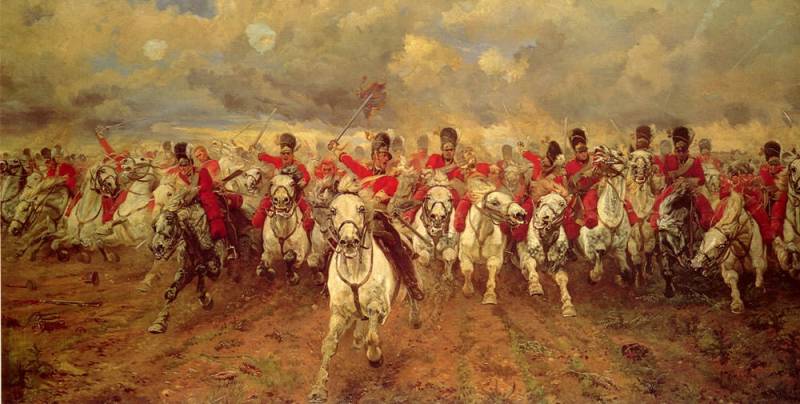
"Scotland forever!" 2nd Royal Dragoon Regiment "Scottish Grays" at the Battle of Waterloo. Artist Elizabeth Butler, 1881. Leeds Art Gallery, West Yorkshire, England
trying to extend, laughing.
Do not get reliable fame,
until the blood was shed ...
Cross wooden il cast iron
assigned to us in the coming darkness ...
Do not promise young maiden
eternal love on earth!
Bulat Okudzhava. Cavalier's song
Military affairs at the turn of the eras. Surprisingly, not only cuirassiers were attributed to heavy cavalry in Europe, which would be understandable, given the weight of their cuirasses and helmets, but also dragoons, although they did not have any protective devices. However, it was precisely the dragoon regiments that very often differed in helmets similar to cuirassier's, or headdresses that did not look like anything at all. The latter included the "Scottish Grays" - a guards dragoon regiment, which distinguished itself in many battles, but did not receive a cuirass, which cannot be said about the Russian cavalry guards. At first they did not have cuirasses, but in the war of 1812 they did appear!
Yes, but where does this regiment have such a strange name? After all, the uniforms of his cavalrymen are by no means gray, but deep red? Well, story The regiment says that in 1678 the Royal Regiment of Scottish Dragoons was formed from two independent Scottish cavalry companies, the number of which was increased to six in 1681. And just at the ceremonial parade of 1694 in Hyde Park, this regiment drove past the observation deck on gray or white horses and ... received the name "gray Scots" stuck to it. Moreover, both this name and the color of the horses remained so unchanged until the XNUMXth century.
After the unification of England and Scotland in 1707, the regiment's official name was changed. It became known as the Royal Regiment of Northern British Dragoons, and then in 1713 Queen Anne assigned the regiment the second number on the list of the army. Moreover, when the two-cornered hats in all other dragoon regiments were replaced with brass helmets, the "Scottish grays" were given high hats made of bearskin with a white sultan. It was simply impossible to cut through such a helmet with a blow from above, although wearing such "headgear" was clearly not easy!
At the Battle of Waterloo (1815), the 2nd Dragoon Regiment was assigned to the brigade along with the 1st Royal and 6th Dragoon Regiments under the general command of Major General Sir William Ponsonby. This brigade of only 416 men was called the "Allied Brigade" because it consisted of one Scottish regiment, one British and one Irish. The Allied Brigade attacked the French infantry, and Sergeant Ewart captured the banner of the 45th Regiment; however, she went too far from the Allied positions, and suffered heavy losses as a result of a counterattack by the French cavalry, and Ponsonby was killed.
The famous British battle artist Lady Butler immortalized this attack in her famous painting "Scotland Forever!" Both military historians and art historians say that this canvas symbolizes everything that was the British equestrian elite at the time. Moreover, many French generals and marshals, despite the absence of cuirasses, considered the British dragoon cavalry the best in Europe, but ... be that as it may, the "Allied Brigade" in that attack lost more than 200 people, depriving the Duke of Wellington of a good quarter of all his cavalry.
Of course, the regiment of Scottish dragoons made a special impression with their horses. For a number of reasons, many regiments of heavy cavalry did not ride white horses in Europe so well. One reason was practical: White horses are more difficult to keep clean and take longer to care for than dark mask horses. Yes, and a set of white or gray horses would be very difficult, but it turned out that the "Scottish grays" rode horses almost the size of ponies, about 150 cm tall at the withers and no more, and there were a lot of them in Scotland and Wales.
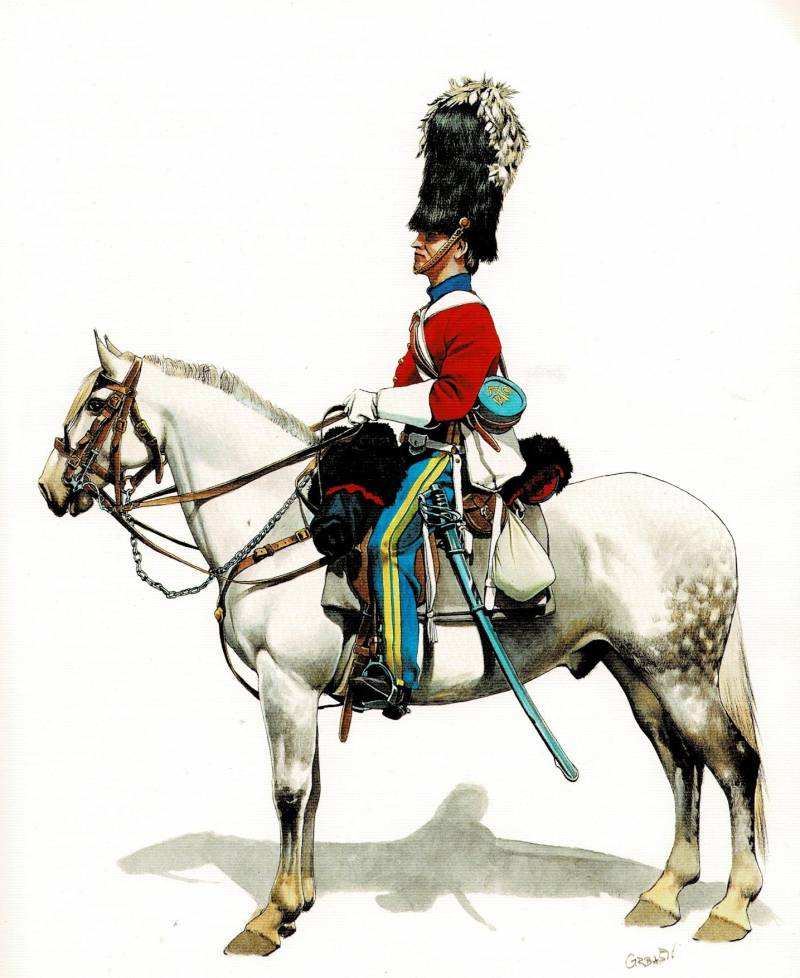
Private Regiment of the "Scottish Grays", 1854 Fig. from the book: V. Vuksic, Z. Grbasic. Cavalry. The history of fighting elite 650BC - AD1914. L .: Cassell, 1994. P.201
In the war against Napoleon in 1806, Saxony was allied with Prussia, but after the defeat in Jena it was under French protectorate in the Rhine Confederation. Duke of Saxony Friedrich August (1750-1826), to whom Napoleon conferred the title of king and crown of the Grand Duchy of Warsaw, put 20 excellent soldiers in the service of his benefactor. In 000, the Saxon army was reorganized according to the French model, and after the introduction of universal conscription, it grew to 1810 people.
Like all other members of the Rhine Confederation, Saxony took part in Napoleon's Russian campaign in 1812. The allied cavalry also included a heavy cuirassier brigade, consisting of the Garda du Corps Guards Regiment and the von Zastrow Regiment with four squadrons each. Many experts believe that this was the best heavy cavalry brigade of the era of the Napoleonic wars. In the Battle of Borodino, the Saxons occupied the key point of the position of the Russian army - the Rayevsky battery, although they lost almost half of their 850 people.
Only 20 officers and 7 people of other ranks returned from the Russian campaign back to Saxony, and 48 prisoners of war were released later. Both regimental standards were lost, as were the famous silver regimental trumpets. During the autumn operations of 1813, the Saxon troops were still on the side of Napoleon, in contrast to the other members of the Rhine Confederation who sided with the Allies. But after the Battle of Leipzig, the Saxons also followed suit.
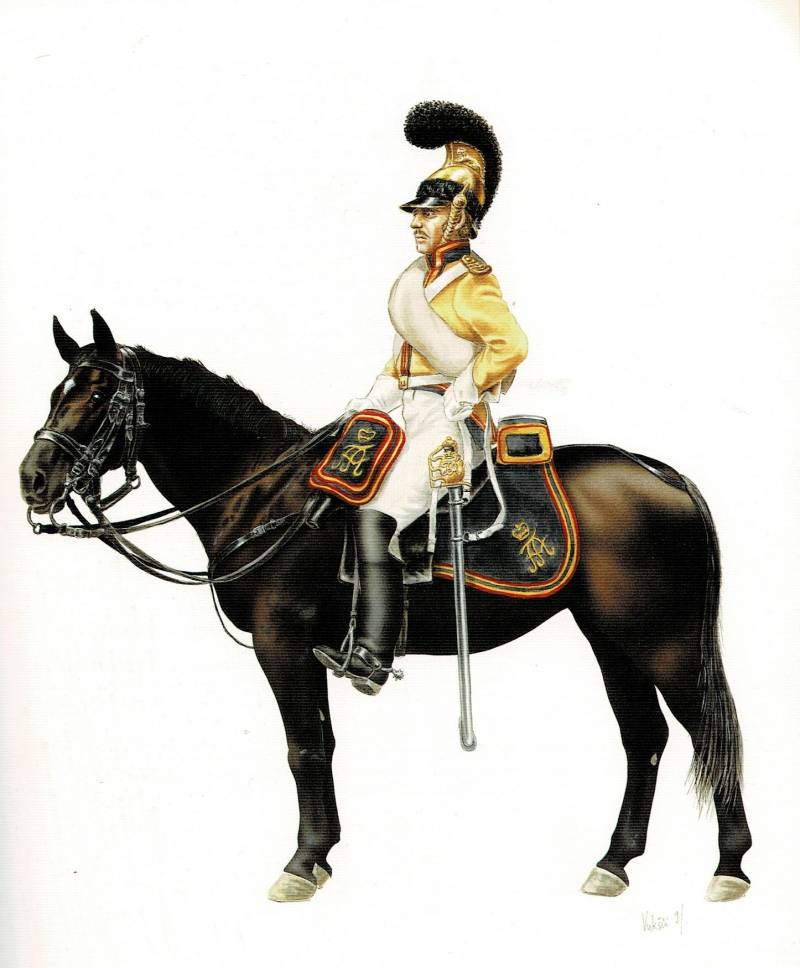
Private cuirassier Garde du Corps, 1812 Fig. from the book: V. Vuksic, Z. Grbasic. Cavalry. The history of fighting elite 650BC - AD1914. L .: Cassell, 1994. P.191
The name Garde du Corps, taken from the French army of Louis XIV, was first used in Saxony in 1710, when a regiment of that name was founded. After the death of Augustus II and the weakening of Saxony, it was disbanded, but as a sign of his alliance with Prussia and recognition of the Prussian Garde du Corps, Friedrich Augustus in 1804 assembled a regiment with the same name, which became the senior division in the army. The regiment's horse structure consisted of black horses of heavy German breeds, although there is evidence that the officers had gray horses. The trumpeters of the regiment used silver trumpets and wore red uniforms, although all others wore yellow. By the way, the Saxon cuirassiers did not have a cuirass! On the field of Borodin, they fought several times with Russian cuirassiers and each time suffered heavy losses. But especially fierce was the "battle in the rye", immortalized on the canvas of the panorama of Franz Roubaud.
In the middle of the 1870th century, the uniforms of the cuirassier regiments acquired the features of an increasing theatricality. In particular, a double-headed eagle appeared on the helmets of Russian cuirassiers of an impressive size, and the helmets themselves began to be made of metal, like cuirasses. Prussian cuirassiers also had a very similar uniform. At the beginning of the Franco-Prussian War (1871-1), the Prussian army had two guards and eight line regiments on the list, and these were probably the most well-equipped and trained heavy cavalry regiments in Europe. With the exception of the Garde du Corps and the Guards Cuirassiers, the regiments were named in accordance with the traditions of the Napoleonic Wars: 2st Silesian, 3nd Pomeranian, 4rd East Prussian, 5th Westphalian, 6th West Prussian, 7th Brandenburg, 8th Magdeburg and 150th Rhine. Each regiment consisted of four squadrons of 200 men and one reserve squadron of XNUMX men.
According to the rules of the Prussian cavalry of 1860, the required height for service in cuirassiers was at least 170 cm for men and 157,5 cm at the withers for horses. For guards cuirassiers, the requirements were higher: 175 cm and 162 cm, respectively. For comparison: the minimum height of men and horses for the dragoon and uhlan units was 167 cm and 155,5 cm, and the hussars and their horses could have 162 cm and 152,5 cm.The horse of a guard cuirassier with a height of 162 cm could weigh up to 600 kg, while the hussar horse (152,5 cm in height) is about 450 kg ... Cuirassier and dragoon regiments served on horses of the Folstein, Hanover and Magdeburg breeds.
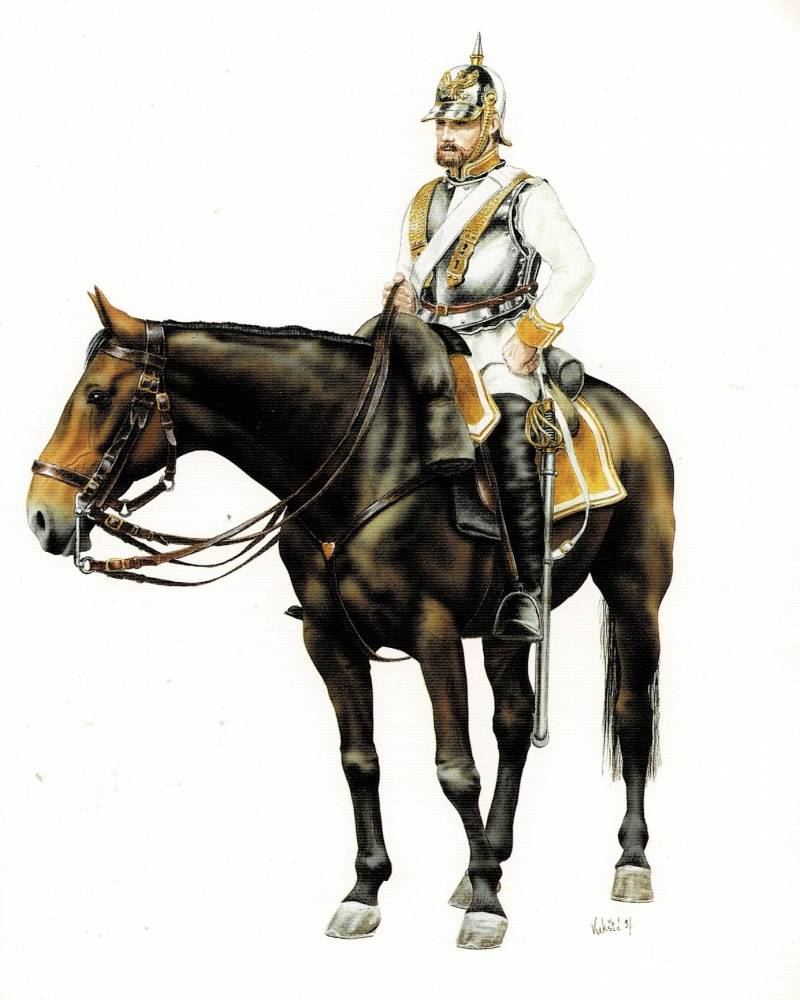
Prussian cuirassier 1871. Fig. from the book: V.Vuksic, Z. Grbasic. Cavalry. The history of fighting elite 650BC - AD1914. L .: Cassell, 1994. P.213
At the initial stage of the Battle of Mars-la-Tour on August 16, 1870, the Prussian Cavalry Brigade, consisting of the 7th Magdeburg Cuirassier Regiment and the 16th Lancers Regiment, carried out an attack by French infantry and artillery, which became known as todesńtt ("trip to death"). The French infantry threatened to attack the weak Prussian left wing at Vionville, thereby endangering a further Prussian offensive. Since the reinforcements could not arrive in time, General Alvensleben ordered General von Bredov to attack the enemy here with cavalry forces, deliberately sacrificing them to stop the enemy, before the approach of his own troops. Von Bredow threw cuirassiers Major Count von Shmetov on the left and lancers on the right at the French - about 700 horsemen in total. Under the fire of cannons and mitrailleuses, the Prussians broke through the French battle formation of the first line and destroyed the artillery pieces and the infantry protecting them. Driven by their success, they attacked the French forces behind the first line, but were met by enemy cavalry and defeated. Less than half of the brigade returned back: 104 cuirassiers and 90 lancers. But this attack until the end of the day kept the French from attacking and eliminated the danger to the left wing of the Prussians.
So in the battle of Mars la Tour, 5 French and Prussian cuirassiers clashed, and it was the greatest cavalry battle of this war!
As for Austria, following the war of 1866, Prussia forced Austria to an unfavorable peace for her in just six weeks. Things were going well for Vienna on the Italian front, but this came as little consolation for the defeat at the hands of the Prussians. But ... defeat led to an extensive reorganization of the army in 1868, the results of which were most evident in the cavalry. When the war with Prussia began, Austria had 12 cuirassier regiments, two dragoons, 14 hussars and 13 lancers. Traditionally, Austrians served in cuirassier units, Poles and Bohemians in lancers, Hungarians in hussars, one of the dragoon regiments was Italian, and the other was Bohemian.
Cuirassiers were the only type of heavy cavalry, all others were considered light, even dragoons. After the reform, the imperial Austrian and royal Hungarian armies became one single Austro-Hungarian army. All cuirassier regiments were turned into dragoons, that is, all Austro-Hungarian cavalry became light. This was a radical step compared to what the Prussians, French and Russians were doing at the same time. Weapon was standardized: for example, the M.1861 / 69 saber was used by both dragoons and hussars and lancers. Equestrian equipment also became standard, and only the Hungarian regiments retained some unique elements. In 1884, even the lance was taken away from the lancers.
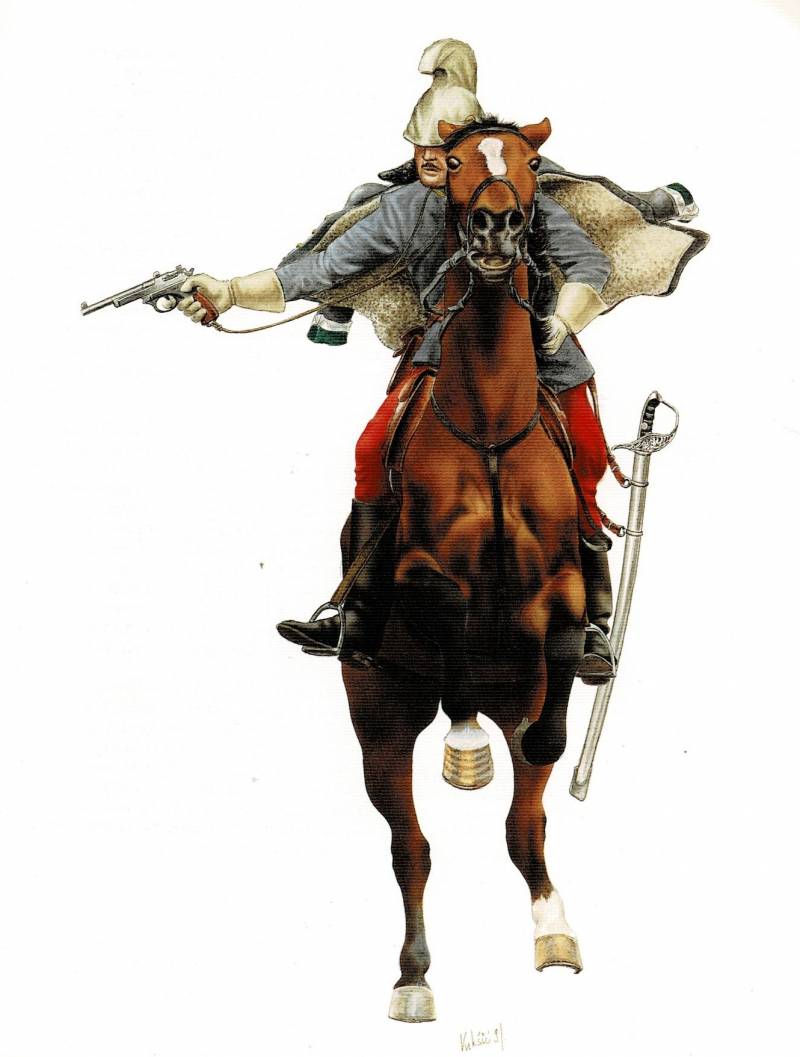
Officer of the Austro-Hungarian Dragoon Regiment, 1914 Fig. from the book: V. Vuksic, Z. Grbasic. Cavalry. The history of fighting elite 650BC - AD1914. L .: Cassell, 1994. P.235
In 1909, a new gray-pike uniform (bekhtgrau) was introduced, but after the demands of the nobility, who served mainly in the cavalry, the emperor decided that the cavalry units could keep the traditional colors in the uniform. The dragoons also retained their helmet with a crest, the uhlans retained their uhlanka cap, and the hussars retained their kiver shako. The number of dragoon regiments was increased to 15, they were allowed to wear their blue uniforms, while trousers for all units were adopted in dark red (krapprot). The M.1905 helmet, modeled after the traditional 1796 helmet, was covered with a gray case. It wasn't until 1915 that the standard field gray uniform worn by the infantry became mandatory for the cavalry as well. They also took off the cavalrymen and their noticeable red trousers.
Before the outbreak of war, the Austro-Hungarian cavalry regiments were organized into divisions, each of which consisted of two brigades. They had two regiments in each division, and the regiments themselves, in turn, consisted of six squadrons. Unlike the Western Front, where the cavalry was used to a limited extent, the Austro-Hungarian cavalry on the Galician and South Polish fronts often clashed with Russian cavalry units up to a division, especially in the initial phase of the war. Although the front became relatively stable, cavalry was heavily used on both sides here, including during the Austro-Hungarian spring offensive in Galicia in 1915. Interestingly, while keeping traditional dress, the Austro-Hungarian military took an innovative approach to weapons: it was their cavalry who were first armed with automatic pistols, while the traditional weapon of their opponents' cavalry was a revolver!
To be continued ...
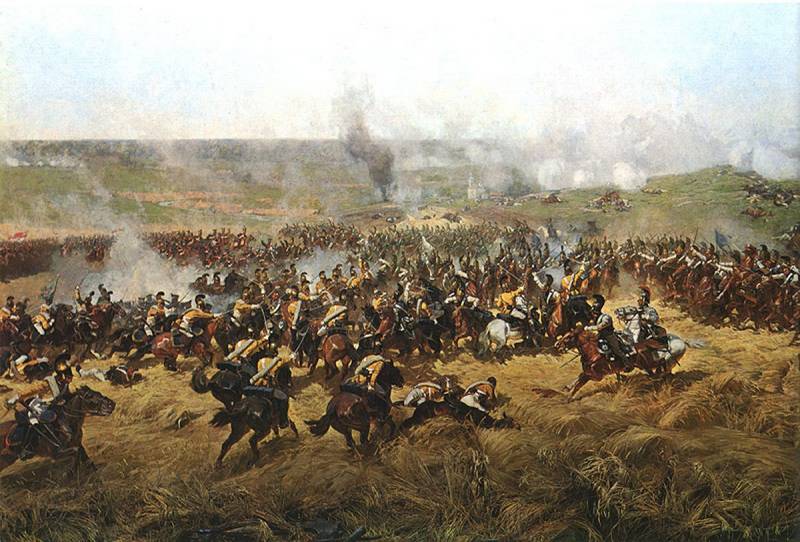
Information